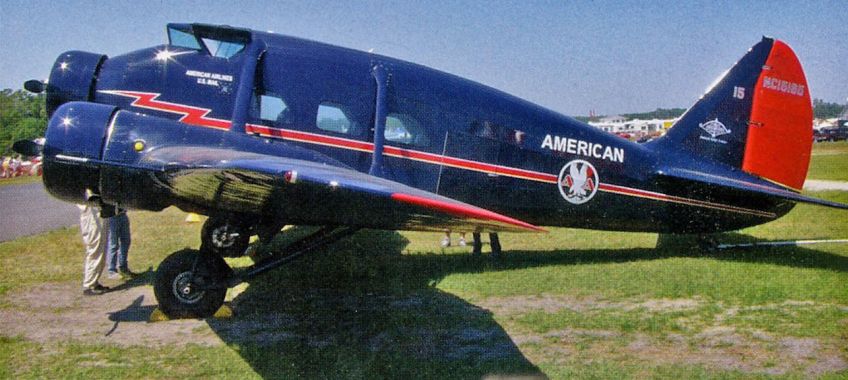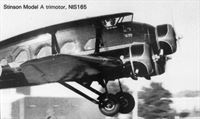
Stinson. Трехмоторные самолеты
<...>
Самолет, получивший обозначение Model A, конструктивно представлял собой низкоплан с подкосным крылом и убирающимся шасси с хвостовым колесом и мог брать на борт двух пилотов, стюарда и 10 пассажиров. Самолет оснащался тремя двигателями Lycoming R-680-5 мощностью 260 л. с.: один располагался в носовой части фюзеляжа и два - в крыле. Было построено всего 35 самолетов, поскольку на момент, когда он появился на рынке, авиалайнер уже безнадежно устарел. Два из четырех самолетов, поставленных австралийским авиакомпаниям, были переоборудованы в двухмоторную конфигурацию с двигателями Pratt & Whitney Wasp мощностью 450 л. с.
Описание:
- Stinson. Трехмоторные самолеты
- Flight, March 1934
THE STINSON "MODEL A" TRANSPORT
Фотографии
-
Мировая Авиация 241
Регистрационный номер: NC15165 [4] Появление на рынке самолетов Boeing Model 247 и Douglas DC-2 поставило крест на судьбе промежуточных вариантов с подкосным крылом, наподобие Model A. Данная машина запечатлена в цветах "American Airways" на авиашоу во Флориде в 2006 году.
-
Flight 1934-08 / Flight
THE STINSON "MODEL A": This feeder line machine, with three 240 h.p. Lycoming engines, was described in Flight of March 29 this year. Eight passengers are carried at a cruising speed of 150 m.p.h. at 5,000 ft.. and the landing gear is of course retractile.
-
Flight 1936-03 / Flight
IN MINIATURE: An imposing view of the Stinson Model A (three 260 h.p. Lycomings) which has been designed specifically for feeder line operation in America. The rights for this machine, which, in its "export" form, has a fixed undercarriage, have been acquired by Brian Allen Aviation, of Croydon. It is possible that we shall see three Stinsons in operation here in the near future.
-
Flight 1938-09 / Flight
A Stinson Model A trimotor of Airlines of Australia refuelling at Archerfield Aerodrome, Brisbane, after a night flight
-
Aeroplane Monthly 1983-11 / S.Piercey - Oshkosh antics
Регистрационный номер: NC15165 [4] Stinson Model A trimotor, N15165
-
Aeroplane Monthly 1985-02 / Grapevine
Регистрационный номер: NC15165 [4] Due to be auctioned in January is 1936 Stinson Model A NC15165. The aircraft is valued at $500,000.
-
Air Enthusiast 1971-12 / Plane facts
One of the relatively small number of Stinson Model A 10-passenger transports built during 1936-7.
-
Aeroplane Monthly 1982-11 / I.Best-Devereux - Oshkosh'82
Регистрационный номер: NC15165 [4] The sole airworthy Stinson Model A trimotor, N15165.
-
Flight 1936-05 / Flight
A Fast American: The Stinson Bi-motor, the British agency for which is held by Brian Allen Aviation Ltd.
-
Air-Britain Archive 1983-03
Регистрационный номер: VH-UHH, VH-UKK The ill-fated Stinson A VH-UHH in the foreground of this photograph together with another of Airlines of Australia's fleet of four of the type, VH-UKK, c/n 9128. In the background is Rapide VH-UBN, c/n 6253.
Другие самолёты на фотографии: De Havilland Dragon Rapide / Dominie / D.H.89 - Великобритания - 1934
-
Flight 1934-03 / Flight
Stinson Model A
- Фотографии










